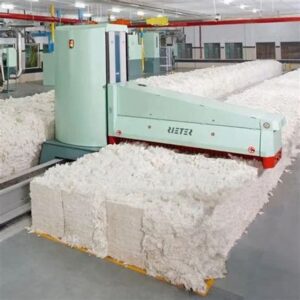Cotton Mill Waste Product Description
Cotton mill waste refers to the by-products generated during the processing of cotton fibers in textile mills. These wastes can include various forms of cotton remnants, such as lint, dust, and short fibers that are not suitable for spinning into yarn. The waste can also consist of leftover materials from the cotton ginning process, where seeds and other impurities are removed from the raw cotton.
The composition of cotton mill waste can vary significantly depending on the type of cotton processed and the specific methods used in the milling process. However, it generally contains a high percentage of cellulose, making it a valuable resource for various applications.
Uses of Cotton Mill Waste
Cotton mill waste has several practical applications, including:
- Textile Production: Short fibers can be blended with other fibers to create yarns and fabrics.
- Insulation Material: The fibrous nature of cotton waste makes it suitable for use as insulation in buildings and vehicles.
- Paper Production: Cotton waste can be processed into pulp for making high-quality paper products.
- Composting: Due to its organic nature, cotton waste can be composted and used as a soil amendment.
- Animal Bedding: The soft texture of cotton waste makes it an excellent choice for animal bedding in farms.
- Biodegradable Packaging: Cotton waste can be transformed into biodegradable packaging materials, contributing to sustainable practices.
Technical Data
Here is a table summarizing the technical data related to cotton mill waste:
| Property | Description |
|---|---|
| Composition | Primarily cellulose (90%+), with some residual oils and impurities |
| Moisture Content | Typically ranges from 5% to 15% |
| Density | Approximately 0.1 to 0.3 g/cm³ |
| pH Level | Generally neutral (6.0 – 7.5) |
| Fiber Length | Short fibers (1-2 inches) |
| Color | Natural white to light brown |
| Biodegradability | Fully biodegradable within 3-6 months |
| Thermal Conductivity | Low thermal conductivity, suitable for insulation |
| Applications | Textiles, insulation, paper, compost, animal bedding, packaging |
This table provides a concise overview of the key technical aspects of cotton mill waste, highlighting its potential uses and characteristics.

